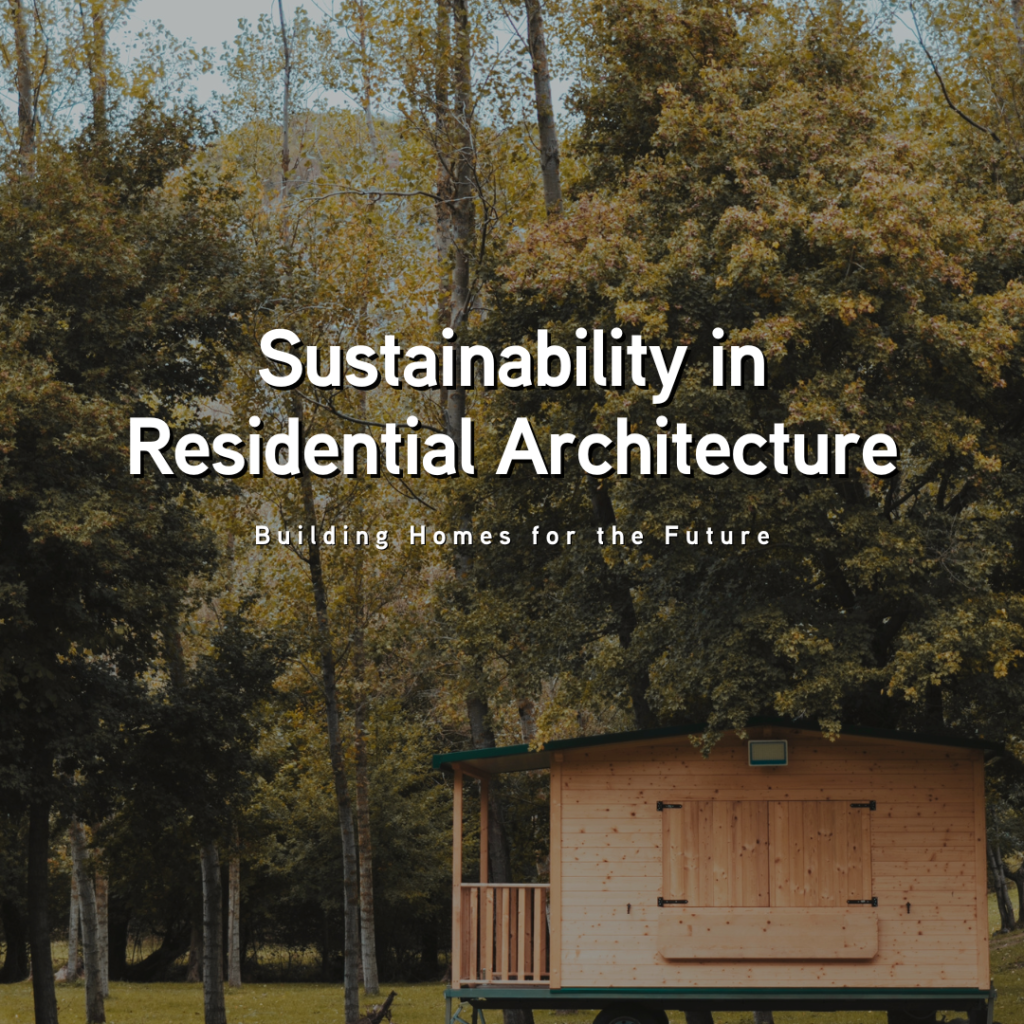Building Homes for the Future
In today’s world, sustainability has become an essential aspect of every industry, and architecture is no exception. With climate change and other environmental challenges, architects and homeowners alike are seeking ways to make homes more sustainable, efficient, and environmentally friendly. In this blog, we’ll explore the concept of sustainability in residential architecture and how it can be applied to create homes that are not only beautiful but also sustainable.

Sustainability in residential architecture refers to designing and building energy-efficient, environmentally friendly, and economically viable homes. It involves integrating sustainable practices into a home’s design, construction, and operation to minimize its impact on the environment. Sustainable homes aim to reduce energy consumption, conserve natural resources, and promote healthy living for their occupants.

Designing a sustainable home requires careful planning and consideration of various factors, including the site, climate, materials, and technology. In fact, Washington state is adopting a new code that will require residential buildings to meet new energy credit requirements. Some of the critical elements that architects focus on when designing sustainable homes include:
Passive Solar Design: This involves designing a home to make use of the sun’s natural light and heat to reduce the need for artificial lighting and heating. Architects achieve this by orienting the home to face the sun’s path and incorporating large windows, skylights, and other features that allow natural light to penetrate the interior.
Energy-Efficient Appliances: Incorporating energy-efficient appliances and lighting fixtures can help reduce energy consumption and costs. Architects may also recommend using renewable energy sources such as solar panels to power the home.
Green Materials: Sustainable homes often make use of environmentally friendly materials such as bamboo, recycled wood, and insulation made from natural materials such as wool or hemp. These materials are durable, non-toxic, and reduce the home’s carbon footprint.
Water Conservation: Sustainable homes incorporate features such as rainwater harvesting, low-flow toilets, and water-efficient landscaping to reduce water consumption and promote conservation.
Indoor Air Quality: Sustainable homes are designed to promote healthy living by incorporating features that improve indoor air quality, such as proper ventilation, low-VOC paints, and using natural materials that do not emit harmful chemicals.

There are numerous benefits to designing and building sustainable homes, including:
Reduced Energy Costs: By incorporating energy-efficient features and renewable energy sources, homeowners can significantly reduce their energy bills over time.
Lower Environmental Impact: Sustainable homes help reduce the carbon footprint of the built environment, which in turn helps mitigate the impact of climate change.
Improved Indoor Comfort: Sustainable homes are designed to promote healthy living by improving indoor air quality, temperature regulation, and natural lighting.
Increased Property Value: Sustainable homes are increasingly in demand, and as such, they often have a higher resale value than traditional homes.
In conclusion, sustainability in residential architecture is crucial for building homes that are not only beautiful but also environmentally friendly and economically viable. By incorporating sustainable practices into the design, construction, and operation of homes, architects and homeowners can help mitigate the impact of climate change, reduce energy consumption, and promote healthy living for occupants. As we move towards a more sustainable future, sustainable homes will become increasingly important, and architects will play a critical role in designing homes built for the future.
